Nara's Kasugayama Forest Reserve doesn't look like a landscape in crisis.
Under the 300-hectare old-growth woodland's brilliant green canopy now turning to its autumn glory, trees and shrubs of every shape and size grow in shady abundance, with nearly 1,500 of the trees spanning more than a meter in diameter at chest height. A 1971 study counted more than 1,200 species of plants growing in the forest, which was protected from logging and hunting for more than 1,000 years thanks to its status as the holy grounds of Kasuga Grand Shrine. Today, the forest is protected both as a Special Natural Monument and a World Heritage site.
But when Yuri Maesako, a professor at Osaka Sangyo University's Graduate School of Human Environment, visits Kasugayama Forest Reserve (KFR) as she has done countless times in the last 20 years, she sees a habitat in peril. The results of her studies over the last decade, she says, indicate that the diversity of plants there is declining and nonnative species are increasing their hold. Even more alarming, the number of young native trees — the forest's next generation — is declining.
"If the situation continues like this, the original evergreen broadleaf forest will not be preserved," says Maesako, who holds a doctorate in ecology.
The culprit, according to her and others studying the area, is quite simply Nara's world-famous and highly photogenic herd of deer.
Long revered and protected as messengers of the deities, the city's approximately 1,200 sika deer (Cervus nippon Temminck) have roots stretching back at least to Nara's founding in 710. In 1957, they were made a government- designated Natural Monument, and today they are at least as much a symbol of the city and staple of its tourist economy as they are sacred animals.
But according to Maesako, the herd has exceeded the size that the grassy part of its main habitat, Nara Park, can support. As a result, the deer are turning for an increasing amount of their food to KFR, which makes up the eastern part of the park (just outside the city limits).
Although the deer prefer the nutrient-rich Zoysia japonica grass that covers the park's flatter areas, they can digest a wide range of plant material and, as there is not enough grass to support them, says Maesako, they strip bark from mature trees in the forest and eat young tree shoots, low-growing plants and low branches. This leads to what scientists call a "deer line" — an absence of growth below the height that deer can reach.
However, Chiharu Fukumoto, a staff member of the Nara Deer Preservation Foundation, a government-funded nonprofit organization that handles the care of deer in Nara, disputes the claim that they have outgrown their habitat.
"There's enough grass," she says. "Deer have been living in Nara since people founded the city over 1,000 years ago. I don't think they are responsible for trees in the old-growth forest dying. Rather, the reason Nara Park is such a beautiful environment is because of the deer."
Pamphlets from the foundation point out that deer provide natural fertilizer and mowing for the park. However, none of the organization's 11 employees specifically studies the forest.
Sorting out the competing claims about the carrying capacity of the park is complicated by a lack of historical data. The foundation carries out a census of deer in the grassy areas of Nara Park each year, but these records only go back to 1945. Several scientific studies done in the 1980s indicated a maximum carrying capacity for the grassy areas of between 800 and 1,000 deer. The current herd is at the high end of that range.
Harumi Torii, a specialist in wild animal management and environmental education at Nara University of Education, who studies the city's deer, says there were several flaws in those studies. He is currently working on a more accurate estimate of carrying capacity. But regardless of such arithmetic, Maesako says the strongest argument for overpopulation is in the forest.
"More than anything, the lack of young plants and evidence of bark-stripping points to overpopulation. If there's this much of a red light, we've got to take this seriously," says Maesako. "It's already late to be taking action."
Her studies have documented both a decrease in the number of native tree saplings and an increase in plants that are unpalatable to deer. A 2002 study by Maesako, Satoshi Nanami of Osaka City University and Mamoru Kanazaki of Kyoto University recorded a large number of two species of trees not originally found in the forest — Podocarpus nagi (Broadleaf podocarpus) and Sapium sebiferum (Chinese tallow tree). P. nagi, a conifer native to other parts of Japan and first planted near KFR about 1,200 years ago, was found throughout shady areas. S. sebiferum, a deciduous broadleaf tree native to China that was introduced to Nara Park in the 1930s, was found mainly in gaps in the forest canopy opened up by typhoons.
These gaps are usually where regeneration of the forest takes place, when young trees grow where older ones were knocked down. But now, according to the study, they are becoming sites for invasion by nonnative species.
Deer overpopulation — and the environmental degradation that often comes with it — is a serious problem not just in Nara but throughout Japan. A 2006 book titled "Sekai Isan wo Shika ga Ku: Shika to Mori no Seitaigaku (Deer are Eating Our World Heritage Sites: The Ecology of Deer and Forests"; Bun-ichi Sogo Shyuppan) describes the damage that herds are causing to Japan's natural treasures from Hokkaido to Yakushima.
One of the most famous examples is Nara's Mount Odaigahara, where bark-stripping by deer has devastated a large spruce forest. Experts say the reasons for the increase in deer are numerous, but include the extinction of wolves, declining numbers of hunters and stray dogs, and changes in land use such as the spread of lumber plantations.
Nara University of Education's Harumi Torii says that the Nara herd's designation as a Natural Monument and its active protection since the end of World War II have also contributed to overpopulation. Specifically, he cites the enclosure of pregnant and newborn deer by the Nara Deer Preservation Foundation as a major population-booster.
Enclosing deer before and after birth is one of a number of things the foundation says it does to prevent people from being harmed by deer, which can be aggressively protective of newborn calves. The group also cares for sick and injured deer, removes the horns of male deer, posts signs to warn drivers to watch out for deer, and oversees the production and sale of biscuits for people to feed to the deer, among other activities. Fukumoto says such initiatives haven't caused a drastic increase in population, and points out that car accidents kill many deer each year.
"We don't actually manage the herd," she says. "We just treat injured deer and provide a little help to the wild deer that naturally live in Nara Park."
But Torii and Maesako say that even this level of interference can have a major impact on animals that have virtually no natural predators, are protected from hunting and live in a mild climate.
Natural population cycles would eventually lead to a balance between the deer and the environment, says Torii, but in the process the park and the forest could be radically reshaped through selective grazing. In other words, only plants that can survive grazing (such as grass) and those unpalatable to deer (such is P. nagi and S. sebiferum) would remain.
"In that situation, my biggest concern would be biodiversity loss," says Torii, who adds that overpopulation is also making the herd itself less healthy.
Torii advocates a reduction of deer numbers in Nara Park, and insists that reducing the herd to its prewar size of about 800 to 900 animals is quite feasible. Possible methods would include culling, limiting food sources through fencing, or — perhaps most practicably — decreasing pregnancy rates by hormonal treatment or by separating females and males during the rutting season. Until now, though, cultural, economic and official barriers have stalled action.
Aside from being protected as a Natural Monument — and still being regarded by some as holy animals — the deer are also a major tourist attraction. But Eichiro Ishikawa, manager of the Nara branch of Ebisuya rickshaw service, says that most of his customers don't know why the deer are in Nara or that they're protected — let alone any details of their effect on the forest.
Wang Dai Wei, 21, a tourist from Harbin, China, had a typical response to the deer. "They're very cute," he said, eyeing some females aggressively vying for biscuits outside Todaiji Temple. "I wish I had the courage to feed them!"
For many shopkeepers around Nara Park, the deer are an economic mainstay. Masafumi Yamamoto, whose family has owned the Sikaya Co. gift shop there since 1877, says he's thankful for what he calls "the idols of Nara," but admits that dealing with deer that eat the (deer-themed) paper-wrapped gifts on display outside the shop or come inside and urinate and defecate can be difficult.
Court cases in 1979 and 1981 proved just how hard taking action against these animals can be. The cases were brought by farmers seeking the right to shoot deer causing damage to their crops (which is a significant problem). The decision stated that deer that wandered beyond a certain perimeter line were no longer protected, and hence could be shot as long as proper permission had been obtained. However, in the nearly 30 years since then, not a single deer has been killed.
"Japan, as well as the city and prefecture of Nara, recognize that Nara's deer herd has grown too large and is having a negative impact on agricultural production, the plants in Nara Park, and tourists," said Yoshihiko Kusumi, an employee at Nara Prefecture Board of Education's Department of Cultural Property Protection, which handles natural monuments including the deer. He said the prefectural government is studying the problem, but no action has been taken to resolve it.
Maesako, who advocates methods other than culling to reduce herd size, sees the lack of public awareness about the deer and their environment as a key obstacle to progress.
"Nara Prefecture needs to work together with scientists, the Nara Deer Preservation Foundation, administrative bodies and the citizens of Nara to create a management plan for dealing with the deer," she says. "It will be important to use taxpayer money to do that, and for that, public approval is essential."
One factor hindering public awareness is the healthy appearance of KFR. In contrast to the many forests nationwide that have suffered severely from bark-stripping, KFR is made up of trees that, when mature, can survive even after large sections of bark have been removed. It's only when this generation of trees dies that the impact of heavy grazing will become visible, as what replaces them may well be quite different.
To make sure concerns about the forest are heard before the damage becomes visible — and possibly irreversible — Maesako is writing articles in the scholarly and popular media and talking at public symposiums and governmental meetings. She is also carrying out several government-funded long-term studies to prove that what's happening in the forest is definitely being caused by deer rather than, say, native trees failing to produce seed or mice eating seeds once they fall. She's hopeful that with continued research and enough public support, the government will take action.
"If nothing changes," she says, "the forest isn't going to disappear today or tomorrow. I think at the very least it will survive for another 100 years or so. But this forest has a history that goes back over 1,000 years. I hope it can survive for at least another 1,000."



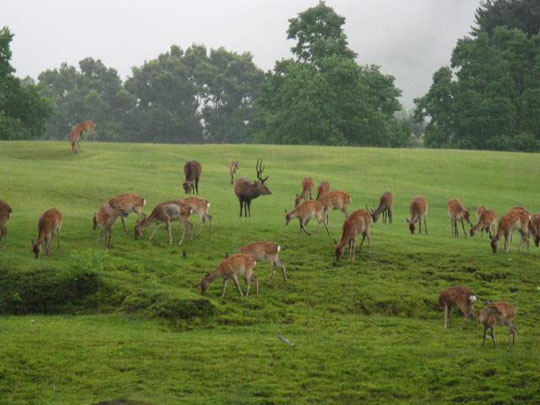
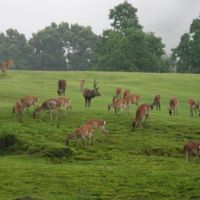

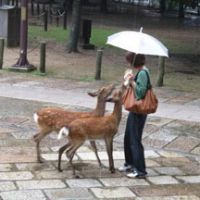
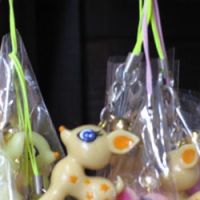
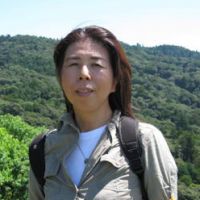

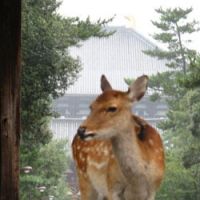














With your current subscription plan you can comment on stories. However, before writing your first comment, please create a display name in the Profile section of your subscriber account page.